- Home
- Deborah Harkness
The World of All Souls Page 51
The World of All Souls Read online
Page 51
Say to the court, it glows
And shines like rotten wood;
Say to the church, it shows
What’s good, and doth no good.
If church and court reply,
Then give them both the lie. . . .
So when thou hast, as I
Commanded thee, done blabbing—
Although to give the lie
Deserves no less than stabbing—
Stab at thee he that will,
No stab the soul can kill.
Title: The Lie
Author: Anonymous. Sometimes attributed to Matthew Roydon or Walter Raleigh (c. 1554–1618)
Background: “The Lie” is an unsparing attack on the pillars of English society, including the courts, the church, the arts, the schools, rulers and “men of high condition,” as well as popularly esteemed values, including love, beauty, friendship, wit, and honor. Much of the power of the poem comes from the drumbeat repetition of the expression at the end of each stanza, “to give the lie.” This is an Elizabethan expression akin to “calling out” someone in order to excoriate, expose, and rebuke them. The author relentlessly exhorts his readers to recognize and denounce the hypocrisy that surrounds them, to lay bare the truth and give the lie to most of the institutions and beliefs that underpinned seventeenth-century society and culture: “Tell zeal it wants devotion; / Tell love it is but lust; / Tell time it meets but motion; / Tell flesh it is but dust / And wish them not reply, / For thou must give the lie.”
There has been a great deal of debate about whether Walter Raleigh wrote this poem, particularly since it came into popular circulation after his death in 1618. Certainly Raleigh had been intimately acquainted with many men and women of “high condition,” whether members of the church or the state, and had suffered sufficient disappointments and reversals of fortune to provide him with this sort of gimlet-eyed disillusionment. Readers of the All Souls trilogy know, however, that it was another member of Raleigh’s circle, Matthew Roydon, who penned these lines before 1590 and shared them with his closest confidants in the School of Night.
See also: CHARACTERS: Walter Raleigh, Matthew Roydon
Quan lo rius de la fontana (When the rill of the source)
“Ni muer ni viu ni no guaris,
Ni mal no·m sent e si l’ai gran,
Quar de s’amor no suy devis,
Ni no sai si ja n’aurai ni quan,
Qu’en lieys es tota le mercés
Que·m pot sorzer o decazer.”
Not dying nor living nor healing,
there is no pain in my sickness,
for I am not kept from her love.
I don’t know if I will ever have it,
for all the mercy that makes me flourish or decay
is in her power.*
Title: “Quan lo rius de la fontana”
Author: Philippe de Clermont (usually misattributed to Jaufre Rudel, c. 1125–c. 1147)
Background: We know from Matthew that “Quan lo rius de la fontana” is a lovely sung poem that Philippe wrote for Ysabeau in the mid-twelfth century, but Jaufre Rudel took the credit for it. Jaufre Rudel was a feudal lord, the Prince of Blaye, who ruled over lands in southwestern France. He was also a trobador, one of hundreds of singing poets of southern France who were respected and celebrated for their lyrical poetry and their beautiful melodies. Rudel is said to have fallen in love with the Countess of Tripoli, even though he had never met her. His love for her inspired many of his songs, including this one; indeed, chivalrous or courtly love, the adoration of an unnamed woman from afar, was the central theme of the trobadors’ songs. Rudel traveled to the Holy Land to fight in the Crusades, inspired by his love for the countess, but he fell ill upon arrival. The countess was summoned from Tripoli, and he died in her arms, thankful to have met her.
This song, “Quan lo rius de la fontana,” is sung in Occitan, the language of the Languedoc region of southern France. Like other trobador songs that have survived for hundreds of years, it conveys the exquisite pain of longing and love, the singer’s desire for union with an unnamed woman, and repeated expressions of devotion and restraint. Matthew sang this song to Diana the first time he brought her to Sept-Tours, when they were falling in love. The simplicity of its lyrics, along with the song’s ability to stir deep emotions, has made it irresistible to listeners, whether vampires, witches, or humans.
Old Mother Hubbard
Went to the cupboard,
To give the poor dog a bone;
When she came there,
The cupboard was bare,
And so the poor dog had none.
She went to the baker’s
To buy him some bread;
When she came back
The dog was dead!
She went to the undertaker’s
To buy him a coffin;
When she came back
The dog was laughing.
Jack be nimble,
Jack be quick,
Jack jump over
The candlestick.
Titles: “Old Mother Hubbard,” “Jack Be Nimble”
Author: Unknown
Background: These are nursery rhymes, singsong chants, or songs whose provenance is difficult to date due to their origins in European oral tradition. Some nursery rhymes might have originated in the thirteenth and fourteenth centuries, but many that are still sung today seem to have emerged several hundred years later, in the sixteenth century. In the past, as now, many of these rhymes were probably sung by mothers and young children. But there has been considerable speculation that these rhymes have darker, hidden meanings or were a form of popular protest and propaganda. Some lay anthropologists have proposed that nursery rhymes contain veiled references to political events, unpopular laws, death and disease, and even ritual sacrifices. For instance, there has been broad speculation that “Old Mother Hubbard” refers to Cardinal Wolsey’s unsuccessful attempt to get an annulment for King Henry VIII so he could marry Anne Boleyn. (Wolsey is Mother Hubbard, the Catholic Church is the cupboard, and Henry, of course, is the poor doggie). The stories behind “Jack Be Nimble” are only slightly less convoluted, imagining that this entertaining little rhyme about a playful boy is actually a reference to yellow fever and the belief that a lit candle would ward off disease (Jack is the yellow fever). Or alternatively that the rhyme refers to a pirate, Calico Jack, and his many escapes from justice, or that it is describing the folk practice of telling fortunes by leaping over a candle.
Perhaps these nursery rhymes are sly references to kings and pirates. Or perhaps they are lighthearted songs and stories that generations of mothers and fathers have told their children about the vampires of London, including Andrew Hubbard and Jack Blackfriars, who have lived there among humans and other creatures for hundreds of years.
EVE SPEAKS TO ADAM:
With thee conversing I forget all time;
All seasons, and their change, all please alike.
Sweet is the breath of Morn, her rising sweet,
With charm of earliest birds: pleasant the sun,
When first on this delightful land he spreads
His orient beams, on herb, tree, fruit, and flower,
Glistering with dew; fragrant the fertile earth
After soft showers; and sweet the coming on
Of grateful Evening mild; then silent Night
With this her solemn bird and this fair moon,
And these the gems of Heaven, her starry train:
But neither breath of Morn when she ascends
With charm of earliest birds; nor rising sun
On this delightful land, nor herb, fruit, flower,
Glistering with dew; nor fragrance after showers;
Nor grateful Evening mild; nor silent Night
With this her solemn bird; nor wal
k by moon,
Or glittering star-light without thee is sweet.
Title: Paradise Lost
Author: John Milton (1608–74)
Background: Matthew quoted this first line from Paradise Lost to Diana after she had prepared dinner for him and they were relaxing with glasses of wine, exchanging some of their earliest, tentative confidences. (For her part, Diana quoted Ben Jonson to Matthew.) The line Matthew chose from Paradise Lost (“With thee conversing I forget all time”) recalls all the most tender beauties of nature, from early sunlight and birdsong to glimmering starlight, and ends with the deeply romantic line that none of these things “without thee is sweet.” If not a declaration of love exactly, it certainly suggested that Matthew had begun to enjoy Diana’s company a great deal.
Paradise Lost was John Milton’s magnum opus, an epic poem done in blank, or nonrhyming, verse. Many critics believe it rivals Shakespeare’s work for literary skill and import. Its subject is the book of Genesis; it imagines and retells the private story of Adam and Eve, their creation and fall from the Garden of Eden. The poem was first published in England in 1667, when Milton was nearly sixty. Milton had spent his life writing pamphlets that criticized prevailing political and cultural forces, including the Anglican Church and the monarchy. By 1667 Milton had suffered a succession of tragedies, including the recent deaths of his second wife and child, the reduction of his sight and finally total blindness, and a severe diminution of his income to near pennilessness. He had dictated his poem to a series of secretaries, regarding it as his attempt, he explained in Book 1, “to justify the ways of God to men.” It is ultimately a hopeful retelling of Genesis; despite Adam and Eve’s having succumbed to the wiles of Satan because of their own weaknesses, Milton describes a difficult but triumphant future for this first couple and, through them, for all humanity.
Tyger Tyger, burning bright,
In the forests of the night;
What immortal hand or eye,
Could frame thy fearful symmetry?
In what distant deeps or skies.
Burnt the fire of thine eyes?
On what wings dare he aspire?
What the hand, dare seize the fire?
And what shoulder, & what art,
Could twist the sinews of thy heart?
And when thy heart began to beat,
What dread hand? & what dread feet?
What the hammer? what the chain,
In what furnace was thy brain?
What the anvil? what dread grasp,
Dare its deadly terrors clasp!
When the stars threw down their spears
And water’d heaven with their tears:
Did he smile his work to see?
Did he who made the Lamb make thee?
Tyger Tyger burning bright,
In the forests of the night:
What immortal hand or eye,
Dare frame thy fearful symmetry?
Title: “The Tyger”
Author: William Blake (1757–1827)
Background: “The Tyger” is an engraved, illustrated poem that marvels at the ferocity of the tiger and the wondrous mechanics of its creation. Published by William Blake in 1794, “The Tyger” is the companion to another poem, “The Lamb”; the two poems, along with others, appeared in a volume of his poetry titled Songs of Innocence and of Experience, Shewing the Two Contrary States of the Human Soul, published in 1789. In this volume Blake sought to capture the complex entirety of the human experience. Instead of a simplistic, binary juxtaposition of opposites (good versus evil, innocence versus experience), Blake contemplated the shared connections and coexistence among many seemingly contrary states and beings. He reminded his readers that the same immortal being had formed both of them: “Did he smile his work to see? / Did he who made the Lamb make thee?”
Unsurprisingly, this most famous of Blake’s poems, “The Tyger,” reminds Hamish of his best friend, Matthew Clairmont. Like the tiger in Blake’s poem, Matthew possesses a terrifying lethality and beauty. He, too, is part of a greater community of beings and a single expression of the diversity of creatures. In the All Souls trilogy, we learn more about the multitudes contained within Matthew, who is simultaneously scientist, vampire, warrior, spy, prince, and assassin. We also discover that the vast diversity of creatures—including witches, daemons, vampires, humans, and Bright Born—spring from common ancestors, despite their apparent differences.
Dedication:
TO MY DEAR AND MOST WORTHY FRIEND
MASTER MATTHEW ROYDON.
It is an exceeding rapture of delight in the deep search of knowledge (none knoweth
better than thyself, sweet Matthew) that maketh men manfully indure the extremes
incident to that Herculean labour . . .
By the true admirer of thy virtues and perfectly vowed friend,
G. CHAPMAN.
Title: The Shadow of Night
Author: George Chapman (c. 1559–1634)
Background: Chapman dedicated this poem to his dear friend Matthew Roydon, one of the few times the mysterious Mr. Roydon is mentioned in the public historical record. The poem, published by William Ponsonby in 1594, celebrates the intellectual achievements of deep thinkers who work under cover of night, and it sorely laments that most people do not appreciate the art and insights of those thinkers. Chapman observes that the ordinary business of daily life tires most men and distracts them from any meaningful learning and art. He then pays homage to the salutary effects of the shadowy night: “No pen can anything eternal write, / that is not steep’d in humor of the night. . . .” And he returns again and again to his theme, that only the night can provide relief from the drudgery and trivialities of the day and allow poets and thinkers to engage in valuable introspection that could uplift public virtue, if only the public would pay attention. Chapman makes it clear in his dedication, however, that he counts his “sweet Matthew” among those who labor productively under the shadow of night. Chapman’s poem and dedication—together with his known connection to other scientists, writers, and philosophers like Thomas Harriot, Christopher Marlowe, Henry Percy, the Earl of Northumberland, and Sir Walter Raleigh—led some historians to call this group of radical thinkers “the School of Night.”
See also: CHARACTERS: George Chapman, William Ponsonby
For storms will rage and oceans roar
When Gabriel stands on sea and shore
And as he blows his wondrous horn
Old worlds die and new be born. . . .
And those that live will ever fear
The dragon’s tail for many year
But time erases memory
You think it strange. But it will be.
And before the race is built anew
A silver serpent comes to view
And spew out men of like unknown
To mingle with the earth now grown
Cold from its heat and these men can
Enlighten the minds of future man.
To intermingle and show them how
To live and love and thus endow
The children with the second sight.
A natural thing so that they might
Grow graceful, humble and when they do
The Golden Age will start anew.
Title: Mother Shipton’s Prophesies
Author: Ursula Soothtell (c. 1488–1561)
Background: Mother Shipton, born Ursula Soothtell, lived in England in the middle of the fifteenth century. A number of her contemporaries praised her abilities as a seer and a prophet with extraordinary powers to describe future events. For instance, she predicted the deaths of prominent figures, including Cardinal Wolsey, with astonishing accuracy. Her story has been passed down to us through the oral tradition among witches, as well as from scattered references to her from
human observers, including the English diarist Samuel Pepys, who mentioned her predictions regarding the Great Fire in London in 1666. Mother Shipton’s Prophesies were first published in 1641, nearly a century after she died, and for the next several centuries her prophecies were reissued (and, suspiciously, they were often updated with new predictions).
Over time descriptions of Soothtell grew increasingly hideous, as she began to appear with a caricatured hooked nose and gnarled body. Later editions of her prophecies began to include predictions of the end of the world, complete with dates, which have come and gone without incident, most recently in 1991. As with many stories about creatures, there was a kernel of truth wrapped in layers of misdirection and prejudice.
Mother Shipton was a powerful witch and seer in her community, who predicted the union of the dragon and the serpent— Matthew and Diana—and that their children would help to usher in a golden age. Eventually, however, various charlatans began to profit from her fabled accuracy by publishing and selling fearful prophecies alleged to have been written by her. For readers of the All Souls trilogy, most of our reliable information about Mother Shipton has been handed down by witches like Goody Alsop, who was apprenticed to Mother Shipton, as well as Tamsin Soothtell, from the present-day coven in London, who is one of her direct descendants.
Yesterday, a hundred thousand of us were select warriors,
They were all good, choice men with green bucklers,
And they were such among those not fearing thousands.
Not thousands, nor tens of thousands, nor however many met them.
A small child appeared, up high on a wild mountain . . .
A beautiful sword he drew from his silver sheath . . .
From the wings, the wings he struck and the middle was wasted,
By the lord, the sweet sun, by his sweet mother,
All day us he struck upstream,
And all night us he struck downstream,

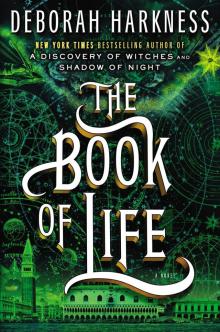 The Book of Life
The Book of Life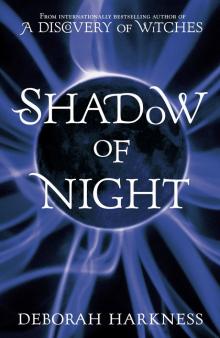 Shadow of Night
Shadow of Night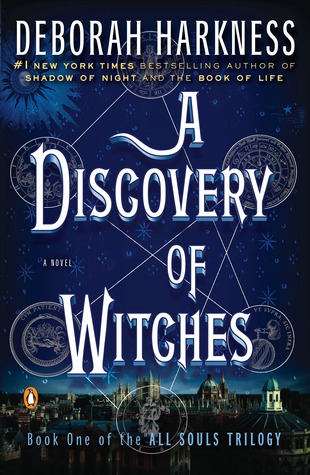 A Discovery of Witches
A Discovery of Witches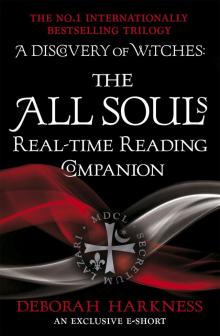 The All Souls Real-Time Reading Companion
The All Souls Real-Time Reading Companion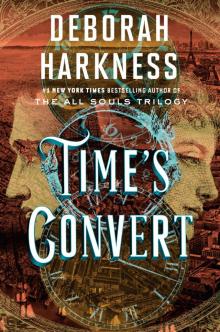 Time's Convert
Time's Convert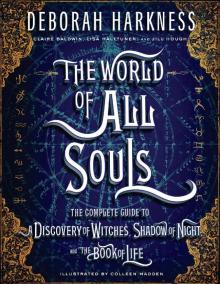 The World of All Souls
The World of All Souls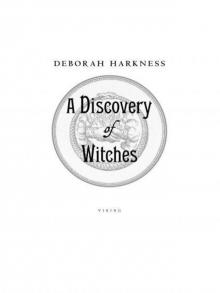 A Discovery of Witches: A Novel (All Souls Trilogy)
A Discovery of Witches: A Novel (All Souls Trilogy) Shadow of Night: A Novel
Shadow of Night: A Novel